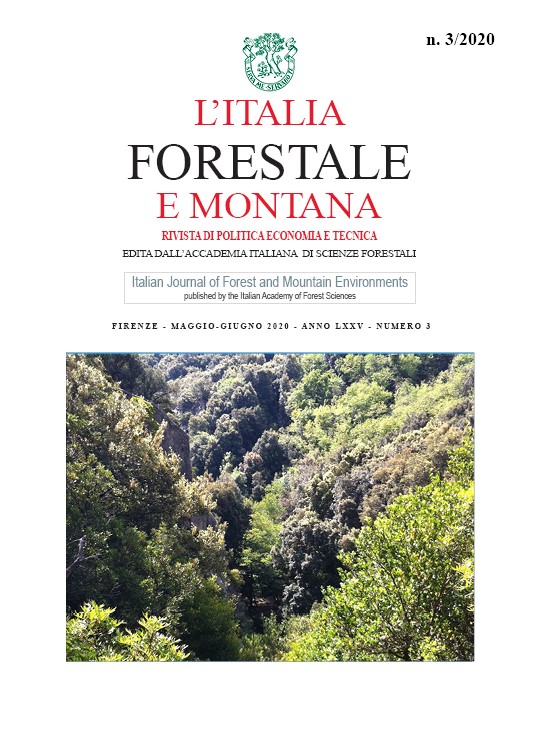Recent experiences in fighting forest fires in the Province of Florence. An organizational model to be extended
Published 2020-07-11
Keywords
- forest fire prevention,
- operational readiness,
- wildfire events analysis
Copyright (c) 2020 Italian Journal of Forest and Mountain Environments

This work is licensed under a Creative Commons Attribution-NonCommercial 4.0 International License.
Abstract
The current AIB (Anti Incendi Boschivi - Forest Fire Fighting) organization in Tuscany and the Florence Province experiences in year 2017 were the starting points for optimization in forest fire prevention and control activities.
The thematic database covered the 2012-2017 period, and the following variables were considered: number of fire events; burned wooded area and total area affected by flames. In 2017, the highest number of fire events were observed, while in average the fire affected area per event was lower than what recorded in less critical years. Besides the combination of several factors and circumstances, these results indicated the high-quality standard, in terms both of effectiveness and efficiency, achieved by the AIB regional organization. The current organizational model is the result of the year-long experience gained over time, and includes the participation of several Public Administration Institutions and Voluntary Associations in fire-fighting activities: in our opinion, resulting in a successful example of forest fire organization model.
Our synthesis will introduce the Florence Group Carabinieri Foresters current control and prevention activities to forest fire fighting. In particular, the main methodologies will be presented covering the themes of (i) prevention and fire control operations; (ii) patrolling in operational readiness in order to ensure an immediate assessment of fire causes; (iii) investigation layout for the “Fire Event Dossiers - Fascicolo Eventi Incendi, (FEI), and (iv) fire fighting checks and investigation activities. Finally, some ideas and critical points - stemming from our professional experiences - will be brought to attention with the aim of improving the several different aspects - including the legal ones - relevant for reducing fire-affected areas in Tuscany, including landscape classification in terms of fire danger exposure and identification of those meteorological conditions, that will predispose the occurrence of the most serious events.
In conclusion, most of the here-proposed evaluations highlight the importance of prevention together with the fire-fighting activities. The key-point - to be deeper investigated together with the Tuscany Region - concerns the analysis of events, which will help to determine fire-event causes and to ascertain possible interrelations and operational strategies.

